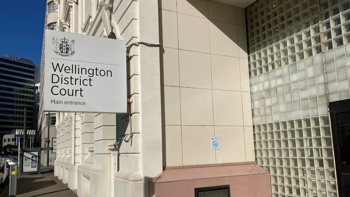
Half of the young offenders remanded to Auckland community homes have escaped custody in recent years, an Oranga Tamariki memo reveals. The challenges of keeping young people in custody when they can often just walk out the door have been laid bare by the accidental release of a confidential document by the agency. George Block reports.
Young offenders sent by a judge to community remand homes are often walking right back out, Herald inquiries have revealed.
Documents and briefings obtained from Oranga Tamariki under the Official Information Act show that of 1154 placements in community remand facilities nationwide from August 2020 to February 2023, 464 — or 40 per cent of admissions — escaped lawful custody.
The figure is even higher in Auckland.
Of 660 remand placements in the city, 326, or 49 per cent, absconded from the homes.
Those figures featured in a memo in April last year from youth justice managers to Oranga Tamariki’s deputy chief executive service delivery, Rachel Leota.
The briefing did not mince words about the scale of the problem and advised management to approve a review of youth justice community homes.
“There is a substantial amount of escaping lawful custody across the network,” the briefing said.
“We want to better understand what leads rangatahi to escape from community remand placements, with a particular focus on Auckland, where escape rates are higher than the national average.”
In 2015, an expert advisory panel produced a report recommending young offenders should be in the least restrictive placement possible within their communities.
The community homes, of which there are a little over a dozen around the country, are intended to help first-time or lower-level youth offenders going through the justice system stay connected to their whānau and social services.
“They are as home-like as possible, including having spaces that can be used by visting whānau,” the memo said.
They are intended as an alternative to the notorious secure youth justice facilities such as Korowai Manaaki in Auckland that have been the source of widespread controversy in recent years amid reports of sexual misconduct by workers, staff-organised fights, brutal assaults and repeated instances of young people climbing on to roofs for extended periods.
Former Children’s Commissioner Judge Frances Eivers repeatedly called for the secure youth justice facilities to be shut down.
The Oranga Tamariki memo said the community homes are intended to prevent the risk to children of institutionalisation and the influence of older and more hardened youth offenders that come with the prison-like secure facilities.
In general, young people stay at the community homes for just a few weeks while waiting for the courts to approve less restrictive options, or while they are on bail waiting for their charges to be heard, the memo said.
The homes are mostly run by contracted social services providers, with a few run directly by Oranga Tamariki.
When at the homes, the young offenders are either in lawful custody or are required to remain there by their bail conditions.

Five young people spent the night of July 1, 2023 on the roof and within its cavity at Korowai Manaaki youth justice facility in Auckland. Repeated similar instances and accusations of assaults and sexual misconduct by staff have led to calls to shut the facilities down. Photo / Alex Burton
Once a provider realises a young offender has absconded from its home, the first thing it is asked to do is advise police of the custody escape or bail breach, before filling out a police missing persons form, then contacting Oranga Tamariki and a social worker.
In the first three months of this year, the community homes filed 67 missing person reports to police, Oranga Tamariki said.
The Herald is aware of concerns among police in Auckland about young offenders being arrested, then remanded to community homes only for them to walk right back out the door and go on to reoffend.
But the homes are not prisons and it can be difficult for staff to stop the teenagers absconding.
Iain Chapman, the national director of Youth Justice and Care and Protection Residences for Oranga Tamariki, said he had been advised police do not hold data on whether crimes were committed after a young offender fled custody.
“As a result, Oranga Tamariki does not hold reoffending information for all young people placed in youth justice community homes and is unable to accurately provide a number of young people since 2022 who were placed in Youth Justice Community Homes and who went on to offend after leaving the homes without permission,” he said in a written statement.
The challenges of keeping young offenders at the homes were laid bare by the accidental release by Oranga Tamariki of minutes of a hui involving several of the social service providers late last year.
The Herald requested via the Official Information Act reports, briefings and meeting minutes relating to the issue of youth offenders escaping custody.
Minutes from a December 7 hui were released, with a section on night-time checks in remand homes mistakenly highlighted in red by an official, instead of redacted.
Oranga Tamariki staff realised the error when contacted for comment and later supplied a redacted version, with an official asking for the earlier document to be deleted.
The unredacted minutes show free and frank discussion by staff from the providers regarding the challenges of young people absconding from the community remand homes.
A representative from a home in Hamilton said a lot of its escapes happen between 9pm and 3am.
Staff do hourly bedroom checks overnight and two checks of the property’s perimeter, he said.
The minutes show staff at some homes ask the young offenders to head out the main door if they are intending to abscond, so staff at least know they are leaving.
“We have young people apologise to our staff as they head out the door,” the Hamilton provider said.
Another Waikato provider, which runs a community remand home on a farm, said it was fortunate the home was away from cities and off a highway.

Oranga Tamariki internal statistics show 49 per cent of young offenders remanded to community homes in Auckland escaped custody. Photo / Jason Oxenham
However, boys staying at the home still absconded, the provider said.
If they leave at night they usually do so in pairs, while if they escape during the day they invariably leave through the main door and tell staff.
“We also will follow and try and bring them back to our whare but if they do not engage within around 20 minutes we also head back to the whare and continue our Awol [absent without official leave] process,” the provider said.
A community remand home provider in Southland described the measures his staff took to avoid escapes.
“We don’t do night-time checks, but we do have cameras on the outside of the whare,” he said.
They also had alarms on all bedroom doors and windows and had two staff working overnight, one asleep and one awake, he said.
“If absconding occurs, we will wake up the other staff member, and contact Oranga Tamariki. Rangatahi do try to sneak out. We have a thorough policy and procedure around this.”
A review of Oranga Tamariki youth residences and a sample of community homes, by change and culture consultant Debbie Francis and former police Inspector Paul Vlaanderen, was released in September last year.
One of the issues identified by the authors was a lack of clear standard operating procedures (Sops) across the homes.
“We were shocked to discover the inconsistencies in practice and approach of Sops in different homes and residences, even within the same region or under the same management spans of control,” they wrote.
The procedures appeared to be informed “more by instinct and practical experience than by evidence-based practice, evaluation and review, or policy and regulation,” the authors said.
“For example, we saw at least three different ‘absconding child’ Sops on notice boards in community homes,” they wrote.
George Block is an Auckland-based reporter with a focus on police, the courts, prisons and defence. He joined the Herald in 2022 and has previously worked at Stuff in Auckland and the Otago Daily Times in Dunedin.
This article was originally published on the NZ Herald here.
Take your Radio, Podcasts and Music with you









